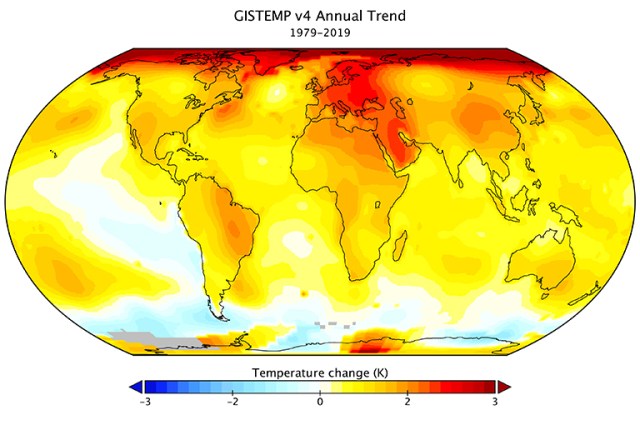jc456
Diamond Member
- Dec 18, 2013
- 139,259
- 29,162
My hat off to you brother.The twit is an internet expert. I have exposed two of his socks as frauds before.
This is his 2nd attempt at trying to be a geologist.
All he is a rat hole troll.
Follow along with the video below to see how to install our site as a web app on your home screen.
Note: This feature may not be available in some browsers.
My hat off to you brother.The twit is an internet expert. I have exposed two of his socks as frauds before.
This is his 2nd attempt at trying to be a geologist.
Well Mr. Wizard. Please explain how a gas that emits its energy at 12-16um can penetrate the oceans to depth. Physics tells us that only wavelengths of 0.2 to 0.6um make it beyond the first ten microns of the ocean's surface, more commonly known as the evaporation layer. The layer directly below this layer is colder than it is. This creates a thermocline barrier. Please explain how CO2 defeats this. This means that both the 1st and 2nd laws of thermal dynamics is at play. Explain how CO2's emissions of energy warm to depth, I'll wait...Interesting. So you don't think gas laws, Henry's Law, Roault's Law and solubility of gases as a function of temperature isn't science?
You are truly uneducated.
I explained this to you just days ago you DISHONEST POS to NO REPLYDid you know that:
- Until 1860 CO2 lagged temperature on both increase and decrease! In fact there is a 450,000 year long data set that proves this. Moreover at the times when CO2 is peaking, temperatures are falling and continues to fall for 10,000 years.
- Chinese CO2 is different. American CO2 is melting the ice caps, causing floods and fires (don't ask), causes the oceans to rise
Yes, I've explained it many times you low IQ Kweationist.Can you explain how CO2 LAGGED temperature on both increase and decrease for the prior 450,000 years, but suddenly it now drives temperature.
Soooooo CO2 does NOT drive temperature????I explained this to you just days ago you DISHONEST POS to NO REPLY
Yes, I've explained it many times you low IQ Kweationist.
Who do you think collected the data for your graphic and noted the "lag?"
Hark! It's the Same Scientists who are telling us THIS warming is uniquely Human caused.
Hark!
Again: (10?) In my own words.
Scientists have been able to measure radiation-in/radiation-out directly and precisely for more than 50 years.
Radiation-in has not changed as the earth warmed.
Radiation reflected back out is being blocked at the exact spectral wavelengths of the GHGs (Greenhouse gases)
CO2 is not the only GHG. (water vapor, Methane, etc)
Methane/CH4 is 20-80 as powerful. (from livestock), and the snowball effect of other GHG warming which releases more methane from the warming oceans and melting tundra.
CO2 is up from 280 PPM to 410, mainly in the last 70 (of 170) years.
Methane has tripled.
Previous warming cycles were caused by orbital changes of angle or distance leading to more radiation-in, aka 'solar forcing.'
We/they know that is/was Not the case this time.
GHGs, as serious Deniers know/use, usually LAG that solar forcing... but this time Led! Because they also contribute to warming even in a natural cycle. (GHG definition).
This cycle was not caused by increased solar energy but rather those gases increased/blanket thickened at an unprecedented rate Compared to natural cycles.
Gameover.
My even answering a 75 IQer like you was a gift...
- - - - - - - - -
`
what is this mumbo jumbo salad supposed to prove exactly?I explained this to you just days ago you DISHONEST POS to NO REPLY
Yes, I've explained it many times you low IQ Kweationist.
Who do you think collected the data for your graphic and noted the "lag?"
Hark! It's the Same Scientists who are telling us THIS warming is uniquely Human caused.
Hark!
Again: (10?) In my own words.
Scientists have been able to measure radiation-in/radiation-out directly and precisely for more than 50 years.
Radiation-in has not changed as the earth warmed.
Radiation reflected back out is being blocked at the exact spectral wavelengths of the GHGs (Greenhouse gases)
CO2 is not the only GHG. (water vapor, Methane, etc)
Methane/CH4 is 20-80 as powerful. (from livestock), and the snowball effect of other GHG warming which releases more methane from the warming oceans and melting tundra.
CO2 is up from 280 PPM to 410, mainly in the last 70 (of 170) years.
Methane has tripled.
Previous warming cycles were caused by orbital changes of angle or distance leading to more radiation-in, aka 'solar forcing.'
We/they know that is/was Not the case this time.
GHGs, as serious Deniers know/use, usually LAG that solar forcing... but this time Led! Because they also contribute to warming even in a natural cycle. (GHG definition).
This cycle was not caused by increased solar energy but rather those gases increased/blanket thickened at an unprecedented rate Compared to natural cycles.
Gameover.
My even answering a 75 IQer like you was a gift...
- - - - - - - - -
`
I am going to explain this to you one more time... The actions of CO2 are driving NOTHING. The current Climate Sensitivity number is 0.3 Deg C. The current expected rise in temperatures, expected from CO2 alone is 0.6 to 0.8 degrees C.I explained this to you just days ago you DISHONEST POS to NO REPLY
Yes, I've explained it many times you low IQ Kweationist.
Who do you think collected the data for your graphic and noted the "lag?"
Hark! It's the Same Scientists who are telling us THIS warming is uniquely Human caused.
Hark!
Again: (10?) In my own words.
Scientists have been able to measure radiation-in/radiation-out directly and precisely for more than 50 years.
Radiation-in has not changed as the earth warmed.
Radiation reflected back out is being blocked at the exact spectral wavelengths of the GHGs (Greenhouse gases)
CO2 is not the only GHG. (water vapor, Methane, etc)
Methane/CH4 is 20-80 as powerful. (from livestock), and the snowball effect of other GHG warming which releases more methane from the warming oceans and melting tundra.
CO2 is up from 280 PPM to 410, mainly in the last 70 (of 170) years.
Methane has tripled.
Previous warming cycles were caused by orbital changes of angle or distance leading to more radiation-in, aka 'solar forcing.'
We/they know that is/was Not the case this time.
GHGs, as serious Deniers know/use, usually LAG that solar forcing... but this time Led! Because they also contribute to warming even in a natural cycle. (GHG definition).
This cycle was not caused by increased solar energy but rather those gases increased/blanket thickened at an unprecedented rate Compared to natural cycles.
Gameover.
My even answering a 75 IQer like you was a gift...
- - - - - - - - -
`

well it seems he doesn't know what logarithmic means.I am going to explain this to you one more time... The actions of CO2 are driving NOTHING. The current Climate Sensitivity number is 0.3 Deg C. The current expected rise in temperatures, expected from CO2 alone is 0.6 to 0.8 degrees C.
View attachment 698869
This means that the other GHG's in the atmosphere are either dampening the actions of CO2 or CO2 cannot do what you claim. Our atmosphere is dampening the expected effects of CO2. There is no enhancement of that action.
Your whole AGW premise and hypothesis is laid waste with just this point of empirically observed evidence.
Please explain how you think CO2 is driving the climate and explain away empirically observed evidence.
Well Mr. Wizard. Please explain how a gas that emits its energy at 12-16um can penetrate the oceans to depth.
Physics tells us that only wavelengths of 0.2 to 0.6um make it beyond the first ten microns of the ocean's surface, more commonly known as the evaporation layer. The layer directly below this layer is colder than it is. This creates a thermocline barrier. Please explain how CO2 defeats this. This means that both the 1st and 2nd laws of thermal dynamics is at play. Explain how CO2's emissions of energy warm to depth, I'll wait...
I also Shut YOU up on your topic on the same day/same threadI am going to explain this to you one more time... The actions of CO2 are driving NOTHING. The current Climate Sensitivity number is 0.3 Deg C. The current expected rise in temperatures, expected from CO2 alone is 0.6 to 0.8 degrees C.
View attachment 698869
This means that the other GHG's in the atmosphere are either dampening the actions of CO2 or CO2 cannot do what you claim. Our atmosphere is dampening the expected effects of CO2. There is no enhancement of that action.
Your whole AGW premise and hypothesis is laid waste with just this point of empirically observed evidence.
Please explain how you think CO2 is driving the climate and explain away empirically observed evidence.

 www.usmessageboard.com
www.usmessageboard.com

 www.usmessageboard.com
www.usmessageboard.com
I am going to explain this to you one more time... The actions of CO2 are driving NOTHING. The current Climate Sensitivity number is 0.3 Deg C.

LOL... How do they defeat the thermocline barriers, of which there are many, in the ocean. You're making a broad claim without facts to back them up.Ocean currents you dimwit (they transport up and down as well as side-to-side). Jeezus...take an oceanography class!
Wow. You are about the most stupid person I've met in a long time. And you think you have a science degree?????
NO.. That is the failed modeling number, not the empirically observed number... Like I told you, I deal in facts, not fantasy numbers.Wrong-o.
Climate sensitivity estimates for CO2 are currently at between 2-5degC.
Go ahead, tell us how MIT is wrong and only YOU are right!

Climate Sensitivity
Climate sensitivity describes the extent to which rising levels of greenhouse gases affect the Earth’s temperature.climate.mit.edu





I am going to explain this to you one more time... The actions of CO2 are driving NOTHING. The current Climate Sensitivity number is 0.3 Deg C. The current expected rise in temperatures, expected from CO2 alone is 0.6 to 0.8 degrees C.
View attachment 698869
This means that the other GHG's in the atmosphere are either dampening the actions of CO2 or CO2 cannot do what you claim. Our atmosphere is dampening the expected effects of CO2. There is no enhancement of that action.
Your whole AGW premise and hypothesis is laid waste with just this point of empirically observed evidence.
Please explain how you think CO2 is driving the climate and explain away empirically observed evidence.

Another model that failed. You guys just can't win.. You keep posting up modeling and nothing with actual empirical evidence. why is that?September 8, 2020
Making Sense of ‘Climate Sensitivity'
New Study Narrows the Range of Uncertainty in Future Climate Projections
By Alan Buis,
NASA's Jet Propulsion Laboratory
[.................]
Q. Your team was able to narrow the range of estimates of Earth's climate sensitivity by more than 43%, from the previously accepted range of 1.5 to 4.5 Kelvin first established in 1979 (roughly 3 to 9 degrees Fahrenheit), to a narrower range of 2.6 to 3.9 Kelvin (roughly 4.5 to 7 degrees Fahrenheit). Why is it important for scientists to narrow this range of uncertainty? What does it mean in practical terms to be able to reduce uncertainties in measuring climate sensitivity?
Schmidt: “Scientists would like to reduce that uncertainty so that we can have more confidence in how we need to mitigate and adapt to future changes. For instance, how much sea level might rise, or how heat waves will get worse, or rainfall patterns change, are tied to the climate sensitivity combined with our actions in changing the atmosphere. A higher climate sensitivity would mean we would have to do more to avoid big changes, while a lower value would mean we’d have more time to adapt. It’s useful to note that we expect to reach double carbon dioxide levels later this century, and that while a few degrees might not seem like much, it's a big deal for the planet. The difference between forests beyond the Arctic Circle or glaciers extending down to New York City is only a range of about 8 K (about 14 degrees Fahrenheit) in the global average, while it changes sea level by 150 meters (more than 400 feet)!”

Making Sense of ‘Climate Sensitivity' - NASA Science
New Study Narrows the Range of Uncertainty in Future Climate Projections Recently, an international research team published a comprehensive review in the journal Reviews of Geophysics on our state of understanding of Earth’s “climate sensitivity,” a key measure of how much our climate will...climate.nasa.gov
`
so how warm is 120 PPM of CO2?Climate sensitivity estimates for CO2 are currently at between 2-5degC.
guesses without evidence. amazing. give us your money and we will tell you. hahahahahahahhahahSeptember 8, 2020
Making Sense of ‘Climate Sensitivity'
New Study Narrows the Range of Uncertainty in Future Climate Projections
By Alan Buis,
NASA's Jet Propulsion Laboratory
[.................]
Q. Your team was able to narrow the range of estimates of Earth's climate sensitivity by more than 43%, from the previously Accepted range of 1.5 to 4.5 Kelvin first established in 1979 (roughly 3 to 9 degrees Fahrenheit), to a narrower range of 2.6 to 3.9 Kelvin (roughly 4.5 to 7 degrees Fahrenheit). Why is it important for scientists to narrow this range of uncertainty? What does it mean in practical terms to be able to reduce uncertainties in measuring climate sensitivity?
Schmidt: “Scientists would like to reduce that uncertainty so that we can have more confidence in how we need to mitigate and adapt to future changes. For instance, how much sea level might rise, or how heat waves will get worse, or rainfall patterns change, are tied to the climate sensitivity combined with our actions in changing the atmosphere. A higher climate sensitivity would mean we would have to do more to avoid big changes, while a lower value would mean we’d have more time to adapt. It’s useful to note that we expect to reach double carbon dioxide levels later this century, and that while a few degrees might not seem like much, it's a big deal for the planet. The difference between forests beyond the Arctic Circle or glaciers extending down to New York City is only a range of about 8 K (about 14 degrees Fahrenheit) in the global average, while it changes sea level by 150 meters (more than 400 feet)!”

Making Sense of ‘Climate Sensitivity' - NASA Science
New Study Narrows the Range of Uncertainty in Future Climate Projections Recently, an international research team published a comprehensive review in the journal Reviews of Geophysics on our state of understanding of Earth’s “climate sensitivity,” a key measure of how much our climate will...climate.nasa.gov
`
they have to, it tells the actual story other than their fiction.I find it very funny that i post up well-established science for the log of CO2 and the AGW zealots ignore it like the plague... They go right around it and ignore it.
LOL... How do they defeat the thermocline barriers, of which there are many, in the ocean. You're making a broad claim without facts to back them up.

Our submarines use these thermoclines to hide from other submarines and EM energy is reflected.
Sonar is smaller in wavelength than CO2's LWIR.. The bigger wave cannot beat the barriers.
You are just spouting bull shit.
You spent the night in Holiday Inn Express huh?I was fortunate enough to be a chem tech on an ocean cruise in the North Atlantic.